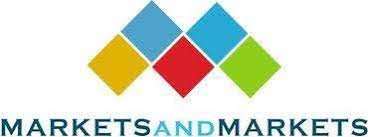The animal disinfectants market size is projected to reach USD 4.9 billion by 2028 from USD 3.4 billion by 2023, at a CAGR of 7.7% during the forecast period in terms of value. The animal disinfectants market has experienced substantial growth in recent years, driven by numerous factors. Increasing concerns regarding animal health and welfare, coupled with the rising demand for safe and high-quality animal products, have propelled the adoption of effective measures in the livestock industry. This measure includes the use of disinfectants as a vital remedy for the well-being of animals. Disease outbreaks, both in developed and developing economies, have highlighted the need for robust disinfection protocols to prevent the spread of pathogens. Additionally, technological advancements and research investments have also contributed to the development of innovative and more efficient disinfection solutions. As the global demand for animal protein continues to rise and awareness of biosecurity practices increases, the animal disinfectants market is expected to witness sustained growth in the foreseeable future.
Animal Disinfectants Market Trends:
- Rising Concerns for Animal Health and Welfare: With increasing awareness about animal health and welfare, there's a growing demand for effective disinfectants to maintain clean and hygienic environments in animal husbandry operations. This trend is particularly prominent in sectors such as poultry, swine, and dairy farming.
- Focus on Preventing Disease Outbreaks: Disease outbreaks can have devastating effects on animal populations and the agriculture industry as a whole. Hence, there's a heightened emphasis on preventive measures, including the use of disinfectants, to control the spread of pathogens and reduce the risk of disease outbreaks.
- Shift towards Environmentally Friendly Solutions: As sustainability becomes a more significant concern across industries, including agriculture, there's a shift towards environmentally friendly disinfectant solutions. Manufacturers are increasingly developing products that are biodegradable, non-toxic, and pose minimal risk to the environment and animal health.
- Technological Advancements: The animal disinfectants market is witnessing advancements in technology, leading to the development of more effective and efficient disinfection solutions. These advancements include the use of novel ingredients, improved formulation techniques, and the integration of automation and IoT (Internet of Things) technologies for precise application and monitoring.
- Regulatory Changes and Compliance: Regulatory standards related to animal health and hygiene are evolving, prompting manufacturers to ensure compliance with stringent regulations. This includes adhering to guidelines set by government agencies regarding the use of disinfectants in animal agriculture and ensuring product safety and efficacy.
- Increasing Adoption of Biosecurity Measures: Biosecurity measures, including the use of disinfectants, are becoming integral components of animal production systems worldwide. This is driven by the need to safeguard animal health, minimize disease transmission risks, and ensure the sustainability of livestock operations.
- Growing Demand in Emerging Markets: Emerging markets, particularly in regions with expanding livestock industries such as Asia-Pacific and Latin America, are witnessing a surge in demand for animal disinfectants. This growth is fueled by factors such as population growth, rising disposable incomes, and increasing awareness about the importance of biosecurity practices.
Animal Disinfectants Market Opportunities: Rise in consumer preference for biological disinfectants
The demand for biological disinfectants is expected to increase during the forecast period on account of the rising consumer inclination toward non-toxic disinfectants coupled with the rising livestock production globally. The general consumer perception is toward the toxic nature of synthetic formulations that farmers are seeking to avoid and adopt biological solutions. The recent change in the regulatory requirements in the developed markets, including the classification of formaldehyde as a possible carcinogen, is a key factor expected to propel the demand for biological disinfectants.
For instance, in Sep 2022, Canada based company Thymox SF, a subsidiary of Laboratoire M2 Inc., made a partnership with Construction Distribution and Supply Co. Inc. (CDS) (US). Through this partnership, CDS gains access to Thymox SF's advanced technology and product line, allowing them to diversify their offering and meet the needs of customers seeking eco-friendly disinfection options for animal facilities. By incorporating Thymox SF's biodegradable disinfectants into their distribution network, CDS can position themselves as a reliable supplier of sustainable solutions, attracting environmentally conscious customers and gaining a competitive advantage in the market.
Thus, the increasing preference for biological disinfectants presents a promising opportunity for the animal disinfectant market. Companies such as Thymox SF’s (Canada) and Ceetal (France) have successfully capitalized on this trend, offering innovative and sustainable solutions that align with consumer demands.
The Europe region accounted for the largest growing market, in terms of value, of the global animal disinfectants market in 2028.
The Europe region accounted for the largest market share in the animal disinfectants industry due to several key factors. Firstly, Europe has a significant presence of livestock and poultry farming, making it a major market for animal disinfectants. The region also has stringent regulations and standards for animal health and welfare, necessitating the use of high-quality disinfectants. Additionally, the growing awareness about zoonotic diseases and the importance of biosecurity measures has further driven the demand for animal disinfectants in Europe, contributing to its leading position in the market.
Animal Disinfectants Market Share
The key players of the market include Neogen Corporation (US), GEA Group (Germany), Lanxess (Germany), Zoetis (US), Solvay Group (Belgium), Kersia Group (France), Stockmeier Group (Germany), Ecolab (US), Albert Kerbel GMBH (Germany), PCC Group (Germany), G Sheperdanimal Health (UK), Sanosil Ag (Switzerland), Delaval Inc (Sweden), Diversey Holdings Ltd (US), Fink Tech Gmbh (Germany). These companies have been focusing on expanding their market presence, enhancing their solutions, and partnering with many channel partners to cater to consumers across the globe. The deep roots of these players in the market and their robust offerings are among the major factors that have helped them achieve major sales and revenues in the global animal disinfectants market.








